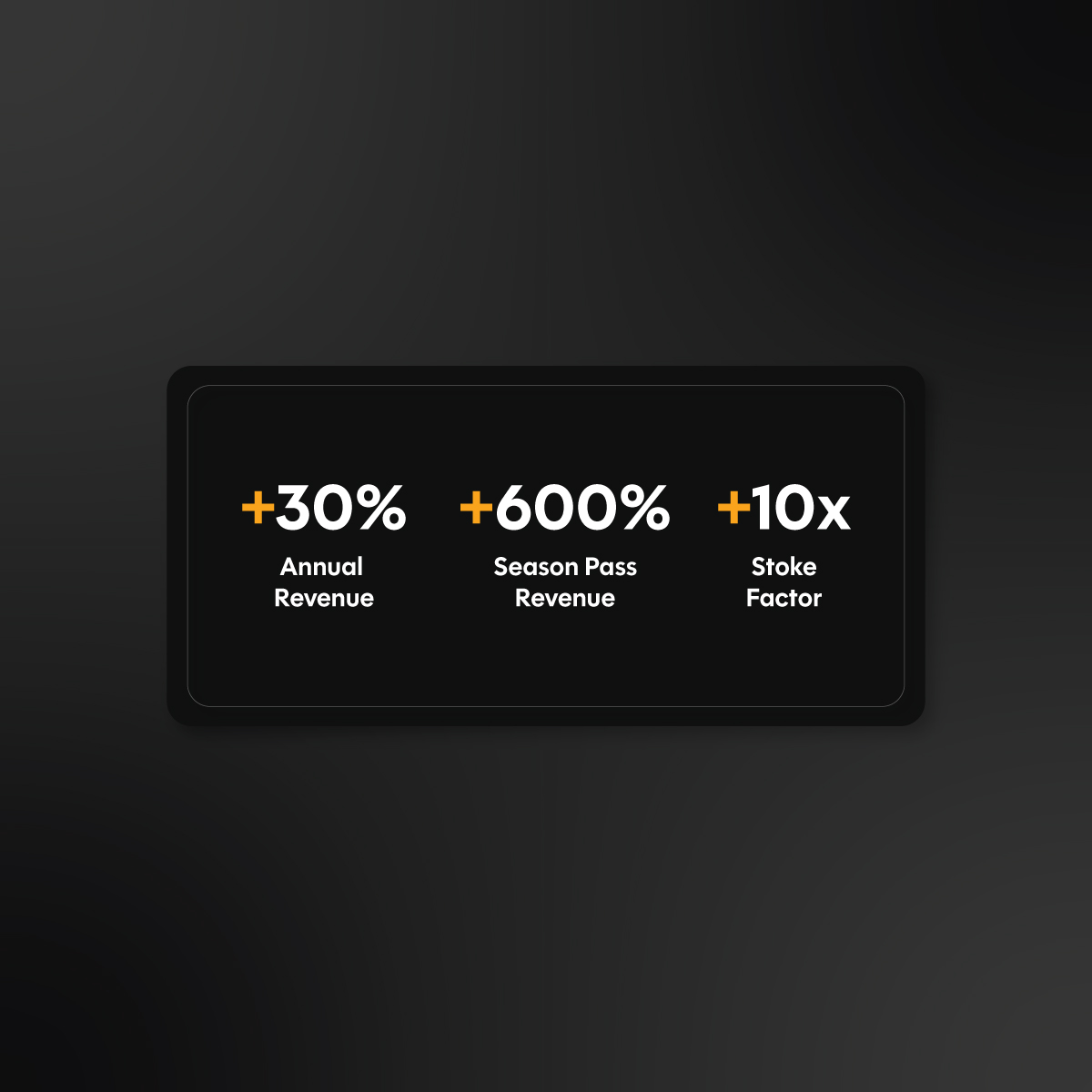When it comes to architecture, your vision shapes physical spaces that stand for decades. But in today’s digital-first world, your online presence needs just as much careful design.
A clear strategy is what turns your extraordinary talent into extraordinary traction.
Most architects don’t lack vision—they lack time, tools, and a roadmap for growing their presence online. The problem isn’t your portfolio; it’s how you’re positioning it on the platforms where your dream clients are already looking.
Why Your Social Media Presence Matters More Than Your Portfolio
Today’s clients are making decisions before they ever reach your inbox.
They research, scroll, and form impressions of your work and approach before even considering reaching out. Your feed, bio, and website aren’t extra to your portfolio—they’re the first interview.
Firms that strategically showcase their values, projects, and insights online aren’t just getting more likes—they’re landing bigger projects and better leads. From sustainable design studios in Portland to boutique residential firms in Miami, the success pattern is clear: visibility leads to viability.
The most successful architectural practices aren’t necessarily the most talented—they’re the ones that understand how to tell their story where their audience is already gathering.
The 7 C’s Framework: Your Blueprint for Social Media Success
Think of this framework as the structural foundation for your digital presence—intentional, integrated, and designed to withstand changing trends or algorithms.
1. Clarity: Clearly Define Your Goals
Start by getting crystal clear about what success looks like for your specific practice.
Whether you’re aiming to increase brand awareness, generate qualified leads, or establish thought leadership within your specialty, every piece of content should intentionally serve that primary goal.
For emerging architects and small firms, the focus is typically establishing credibility and creating connections—so prioritize content that demonstrates your values and process, not just your visual portfolio.
Architect’s Edge: Define Your Unique Value Proposition
Are you the sustainability-obsessed designer who makes net-zero accessible for everyday homeowners?
The preservation specialist who breathes new life into historic spaces?
The minimalist who maximizes light and function?
Your architectural perspective should be immediately clear in every bio, every pinned post, and every “About” section. This clarity becomes your digital signature and makes you more memorable for your target audience.
2. Customer: Identify Your Ideal Client With Specificity
Your ideal client isn’t “everyone who needs an architect.”
Think about it. Let’s say someone’s looking to design their next $15 million home. Are they more likely to pick someone who’s positioned as ‘Architect based in [city]’ or ‘10+ years experience designing houses for the Hollywood’s top execs’?
The most effective social strategies speak directly to a specific audience segment with particular needs, values, and pain points. Consider who you’re truly designing for:
- Eco-conscious homeowners seeking sustainable renovations?
- Boutique business owners needing spaces that reflect their brand values?
- Developers with a modern aesthetic and efficiency requirements?
Speak to one client persona at a time. Specificity creates resonance. Generalization merely adds to the noise.
Try This: Build your content calendar around your ideal customer persona. For this example, we’ll say the persona is “Conscious Carolyn”—a 30-something entrepreneur dreaming of converting a warehouse into a net-zero home office. Address her specific questions, values, and the friction points she experiences when considering architectural services.
3. Channels: Master the Right Platforms, Not the Most Platforms
Don’t stretch yourself thin trying to maintain a presence everywhere. Go deep on the platforms that showcase your work best and where your ideal clients actually spend time.
Instagram: The visual storytelling platform remains ideal for architects, allowing you to create an aesthetic feed that showcases your design language and perspective.
LinkedIn: Essential for establishing professional credibility, thought leadership, and connecting with commercial clients and developers.
TikTok or Reels: Perfect for quick process videos, personality-driven content, and reaching younger clients planning their first home purchase or renovation.
Master two platforms completely before expanding. Be where your clients are searching, not just where other architects are posting.
4. Content: Share Stories, Not Just Pretty Pictures
You’re not just displaying a portfolio—you’re solving problems and sharing transformations through visual storytelling.
The most engaging architectural content takes viewers beyond the finished product to understand the journey:
- Sketch-to-reality transformations
- Behind-the-scenes problem-solving moments
- Client testimonials paired with completed spaces
- Before/after comparisons with commentary on challenges
- Site walkthroughs that highlight thoughtful details
Storytelling Framework: Structure your content to show: What was the challenge or constraint? How did your design thinking address it? What was the transformation (for both the space and the people who use it)?
For example, don’t just show the stunning courtyard—explain how it solved the client’s need for privacy while maximizing natural light in a dense urban setting.
5. Calendar: Plan Your Content Like You Plan Your Projects
Batch your content creation like you batch your work—with intention and foresight.
Create a flexible content calendar organized around:
- A monthly content calendar (social media NEEDS to be planned in advance)
- Key campaigns (project completions, awards, seasonal design tips)
- Content pillars (projects, personal insights, technical tips, industry trends)
Here’s the weekly workflow we recommend our clients follow:
Monday: Analyze & Blueprint Begin your week by evaluating performance before drafting new plans. Which design stories resonated with your audience? Which project highlights generated inquiries? This analysis forms the foundation for this week’s content direction. Select which aspect of your practice to highlight—perhaps material innovations on Monday, site context challenges on Wednesday, and client collaboration stories on Friday.
Tuesday: Source & Document Dedicate this day to gathering your raw design materials. Photograph material samples with interesting textures, capture progressive site photos, collect compelling statistics about sustainable building practices, or record brief commentary on an interesting design challenge you’re currently solving. Think of this as your schematic design phase—collecting the essential elements before refinement.
Wednesday: Develop & Design Now refine those raw materials into finished content. Use design tools like Canva (with architecture-specific templates) to create visually consistent graphics that reflect your aesthetic sensibility. Draft messages that translate technical concepts into value-driven narratives. This is your design development phase—where rough ideas take defined form.
Thursday: Refine & Program Finalize your messaging, ensuring it reflects your firm’s distinct perspective and includes strategic keywords for discoverability. Then use scheduling tools like Later, Planoly, or the Meta Business Suite to program your content deployment. This systematic approach preserves your creative energy for actual design work rather than daily social media management.
Friday: Evaluate & Iterate Dedicate time to reviewing key performance metrics that align with your goals. Analyze reach (visibility), saves (content value), and website clicks (action taking). Document patterns and insights to inform your next design iteration. This reflects the post-occupancy evaluation process—learning from what was built to improve future designs.
Remember: you’re not just posting to post—you’re building connections and demonstrating value consistently over time.
6. Connect: Engage Authentically, Not Algorithmically
The algorithm rewards engagement—but your audience rewards authenticity.
The difference between architects who just exist online and those who thrive is often found in how they interact, not just what they post:
- Respond thoughtfully to DMs and comments
- Ask specific questions in captions to invite conversation
- Comment meaningfully on peers’ and partners’ content
- Repost and celebrate when clients tag your work
This is where real leads often begin—not in your link in bio, but in the conversations you initiate and nurture. Your responsiveness signals how you’ll treat potential clients throughout their project journey.
7. Check: Measure What Matters, Not Just What’s Easy
Analytics aren’t just numbers—they’re feedback from your audience about what resonates.
Pay attention to these meaningful metrics:
- Saves = content value (people want to reference it later)
- Shares = audience connection (they stake social capital on your content)
- Comments = community engagement (they’re invested enough to contribute)
- Profile visits or website clicks = interest converting to potential action
Look for patterns over time and evolve accordingly. Don’t guess—optimize based on what your specific audience is telling you through their actions.
Building Your Digital Foundation as an Architect
Your website isn’t a digital business card—it’s your hardest-working employee.
It functions 24/7 to validate your expertise and transform visitors into inquiries. But only if it’s strategically designed to do so.
Must-Haves for Your Architecture Website:
- Fast load time (under 3 seconds, even for image-heavy portfolios)
- Clear calls to action (“Book a Consultation,” “View Projects by Type”)
- Mobile responsiveness (over 60% of initial research happens on mobile)
- Visual hierarchy with intuitive navigation and project categorization
- Trust signals like certifications, awards, and client testimonials
Your homepage should communicate your unique value proposition within 5 seconds. Your portfolio should be beautifully displayed but logically organized, and your contact information should be prominently featured on every page.
Lead Generation Tactics That Actually Work for Architects
You don’t need thousands of followers—you need the right 20 people to care deeply about your approach.
Try these proven strategies:
- Create a valuable resource like “5 Questions to Ask Before Hiring an Architect” in exchange for email addresses
- Share process-focused case studies that show your problem-solving approach, not just pretty end results
- Personally welcome new followers with a warm introduction message (not a hard sell)
- Host virtual tours or Q&A sessions highlighting a recent project’s unique challenges and solutions
Every meaningful interaction is a seed. With consistent nurturing, you’ll grow both a community and a client list that values your specific architectural perspective.
Showing Your Work Without Feeling Self-Promotional
Storytelling transforms your portfolio from a mere slideshow into a compelling journey.
Try these approaches that focus on value rather than self-promotion:
- Process videos: from initial concept sketches to final walkthrough
- Transformation posts: juxtapose before/after images with specific challenges overcome
- Guided tours: walkthroughs with commentary on design decisions and material choices
- Client experience stories: pair beautiful imagery with authentic client testimonials
Example: Instead of simply posting photos of a completed sustainable home, share: “Before we designed this space, the Jones family was spending over $400 monthly on energy costs in a home that never felt comfortable. Now, their net-zero home maintains perfect temperature year-round with utility bills under $30. Swipe to see how we integrated passive solar principles while maintaining their midcentury aesthetic.”
Establishing Credibility and Authority Online
Thought leadership isn’t bragging—it’s building trust through valuable perspective.
Share your informed point of view on:
- Design trends worth embracing (and others worth questioning)
- Sustainable practices that actually deliver ROI for clients
- The future of urban living spaces or multigenerational homes
- How to evaluate whether an architect is the right fit for a specific project
Consistently sharing your perspective positions you as the go-to expert for your niche—not just another beautiful portfolio in an oversaturated market.
Balancing Personal and Professional Branding as an Architect
People don’t hire portfolios or firms. They hire people they trust to understand their needs and translate them into physical reality.
Let potential clients connect with the person behind the designs:
- Share candid moments from your creative process
- Introduce elements of your workspace, inspiration sources, or daily ritual
- Mix thoughtful work-life reflections alongside your project updates
- Demonstrate your values through what you choose to highlight and celebrate
Show up as both architect and human. That authentic combination creates the most compelling brand.
Common Social Media Mistakes That Stall Architectural Practices
Don’t undermine your talent with these common pitfalls:
- Posting only perfectly polished renderings with no context or story
- Ignoring comments and messages (signaling you might do the same with clients)
- Posting inconsistently, then wondering why engagement drops
- Using low-quality or poorly lit photographs that undermine design quality
- Never analyzing which content performs best with your specific audience
Remember: random effort produces random results. Strategic consistency is what builds momentum.
Recommended Tools for Social Media Success
Make your strategy sustainable with these architect-friendly tools:
- Canva – Create templates for consistent story graphics and Reels covers
- Notion or Airtable – Build flexible content planning systems
- Loomly, Buffer, or Meta Business Suite – Batch post to maintain consistency during busy project phases
- CapCut – Create fast, professional video edits without complex software
Your Next Steps: From Inspiration to Implementation
You’re not “too early” or “not ready” to create a strategic social presence. You’re already building something meaningful—it’s time to let the right people see it.
Start with a simple strategy aligned with your available time. Share what you’re learning and creating. Connect intentionally with people who value your perspective.
And remember: Your dream clients are already searching for answers you can provide. It’s time to make sure they find you first.
Ready to Transform Your Digital Presence?
You don’t need to become a full-time content creator or sacrifice billable hours. You just need a smart, sustainable strategy that showcases your work authentically and attracts aligned clients.
Book a brainstorm today, and let’s develop a customized social media marketing for architects strategy that amplifies your architectural vision and connects you with clients who truly value your approach.










